On Saturday’s third of four FIFA World Cup 2018 matches, Denmark narrowly beat out an exciting Peru side. The final score was 0-1, with both sides using multiple tactics to create chances to score but ultimately struggling. For admirers of the long ball and stout defending, Peru vs Denmark was like Christmas Morning.
Team Sheets and General Approaches
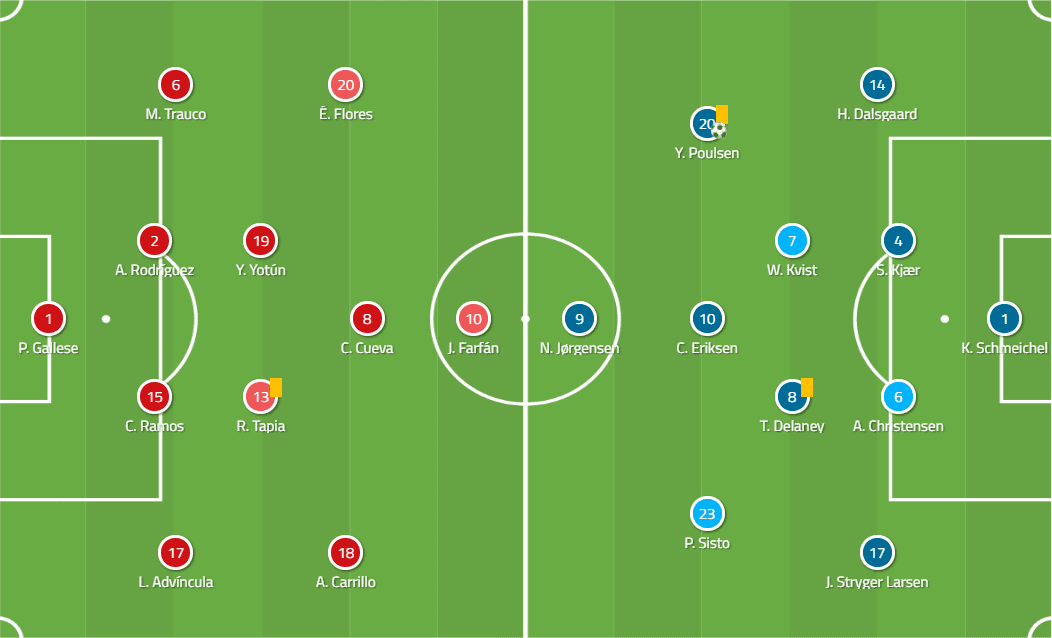
Peru Get out and Run
Peru manager Ricardo Gareca put forth a familiar lineup to kick off Peru’s first World Cup appearance in over three decades. The only change from the final pre-tournament friendly was winger Édison Flores starting over the much-discussed striker Paolo Guerrero. Jefferson Farfán moved from the midfield to the talisman role, while Christian Cueva shifted inside from out wide.
The shifting of roles on the team sheet translated to a shifting of roles on the pitch, as Peru’s forward line remained fluid throughout the match. Dynamic right-winger André Carrillo switched flanks with Flores at times, a deliberate attempt to liven up Peru’s attacking force.
Peru were most comfortable when pushing the game forward on the counter-attack, a predictable trait considering the athletic personnel on the pitch for La Blanquirroja. A non-attacker who managed to impact the match was Luis Advíncula, a physical defender whose dangerous runs constantly threatened Denmark’s backline. Young midfielder Renato Tapia – touted as Peru’s future captain – acted as a fulcrum between defence and attack, especially as Gareca’s defenders were often forced to clear balls out to him.
Direct Play for the Danish
It was more of the same for Denmark, as experienced manager Åge Hareide listed his tried and trusted eleven. While Christian Eriksen is the obvious standout player in the side, much of the play runs from back to front in a direct manner. Striker Yussuf Poulsen, positioned out wide on the right, acts as a target-man to receive or knock down long balls from Denmark’s defenders.
This lineup choice hints at the tactics of the Danish, which is to work the ball around when possible but ultimately launch balls over the midfield. From there, the more creative players like Eriksen and Pione Sisto can run at the opposing defenders, often times having regained possession in the final third after a successful aerial challenge. Christian Eriksen takes up a fluid role in these scenarios, often drifting towards where he believes the deflection will fall.
When Denmark did take their time on the ball, which they did more often than Peru, the left flank was the ultimate destination. As mentioned before, Sisto is a much more creative player than right-winger Poulsen and – aided by the overlaps of Jens Stryger Larsen and the marauding runs of Thomas Delaney – Denmark were able to create some overloads on the left wing.
First Half
Denmark Struggle to Create
Both teams started out with a clear intent to play directly at the other’s goal, as was expected. Denmark appeared to have a more organised method to building from the back, while Peru opted to attack down their left flank. That being said, both teams created their best chances by lobbing balls from deep towards attackers, whether that be Nicolai Jørgensen or Yussuf Poulsen for Denmark or Jefferson Farfán or Renato Tapia for Peru.
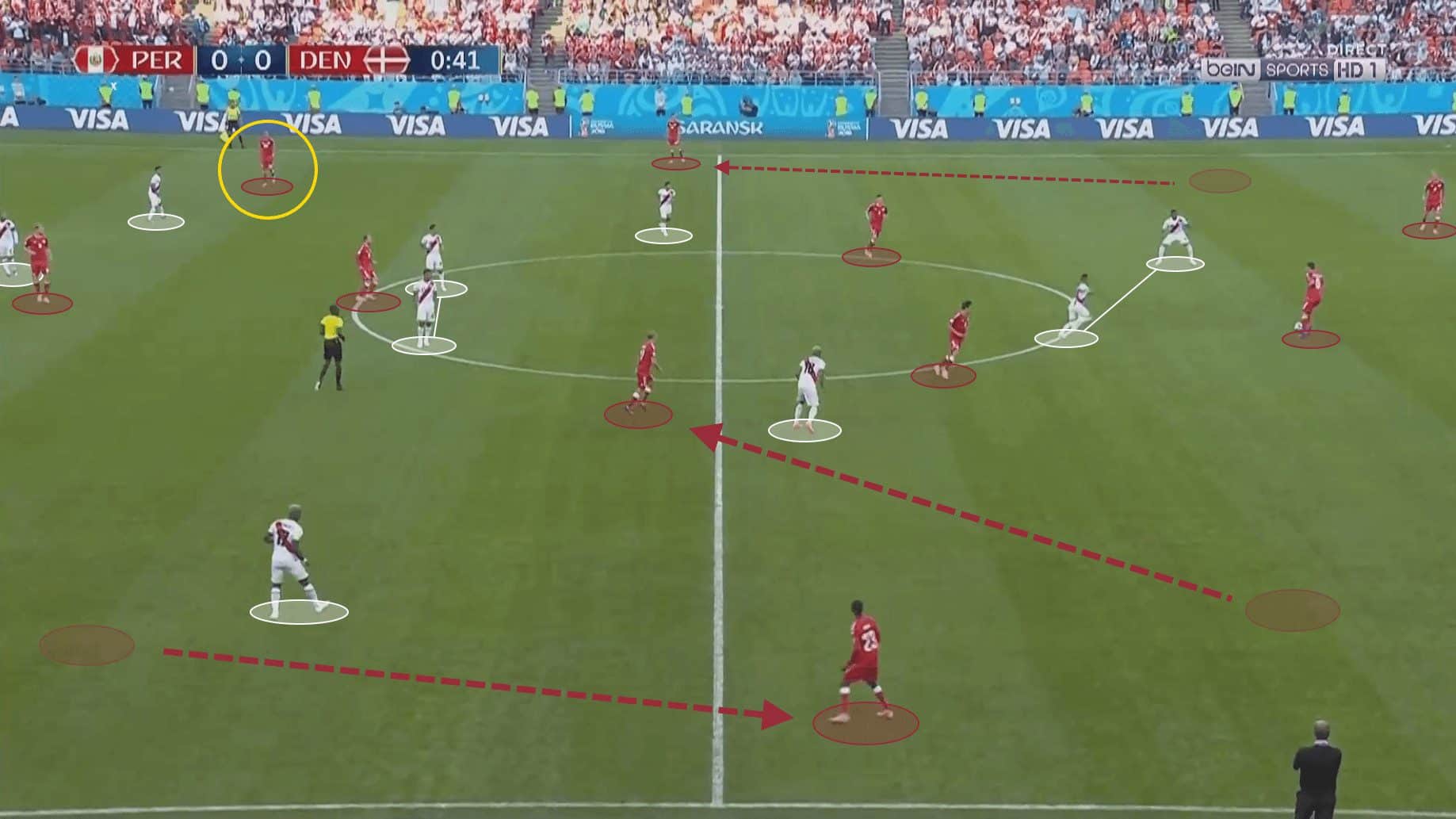
Denmark’s direct play intent is not immediately apparent by looking at their first phase of building up. On the near sideline, winger Pione Sisto drops into space, acting as an outlet on the left. Left-back Stryger has already vacated this space by moving centrally, which will allow him to break free if Andreas Christensen can find a pass to the midfield.
On the right flank, right-back Henrik Dalsgaard positions himself higher up the pitch as a target for a potential long pass. Likewise, Poulsen – circled in gold – wanders in space to prepare for a long ball. Poulsen’s large frame makes him a menace to defend against for opposing full-backs, usually much shorter than the RB Leipzig forward.
The Peruvian defence immediately sets out to deny access to Delaney and William Kvist, Denmark’s two deeper midfielders. In this case, free-roaming midfielder Christian Cueva comes out to help Farfán in this task. Peru’s will to constrain the centre of the pitch is made even more clear by the fact that Carrillo and Flores, the two wide men, leave their stations on the flanks to loosely man-mark said defensive midfielders.
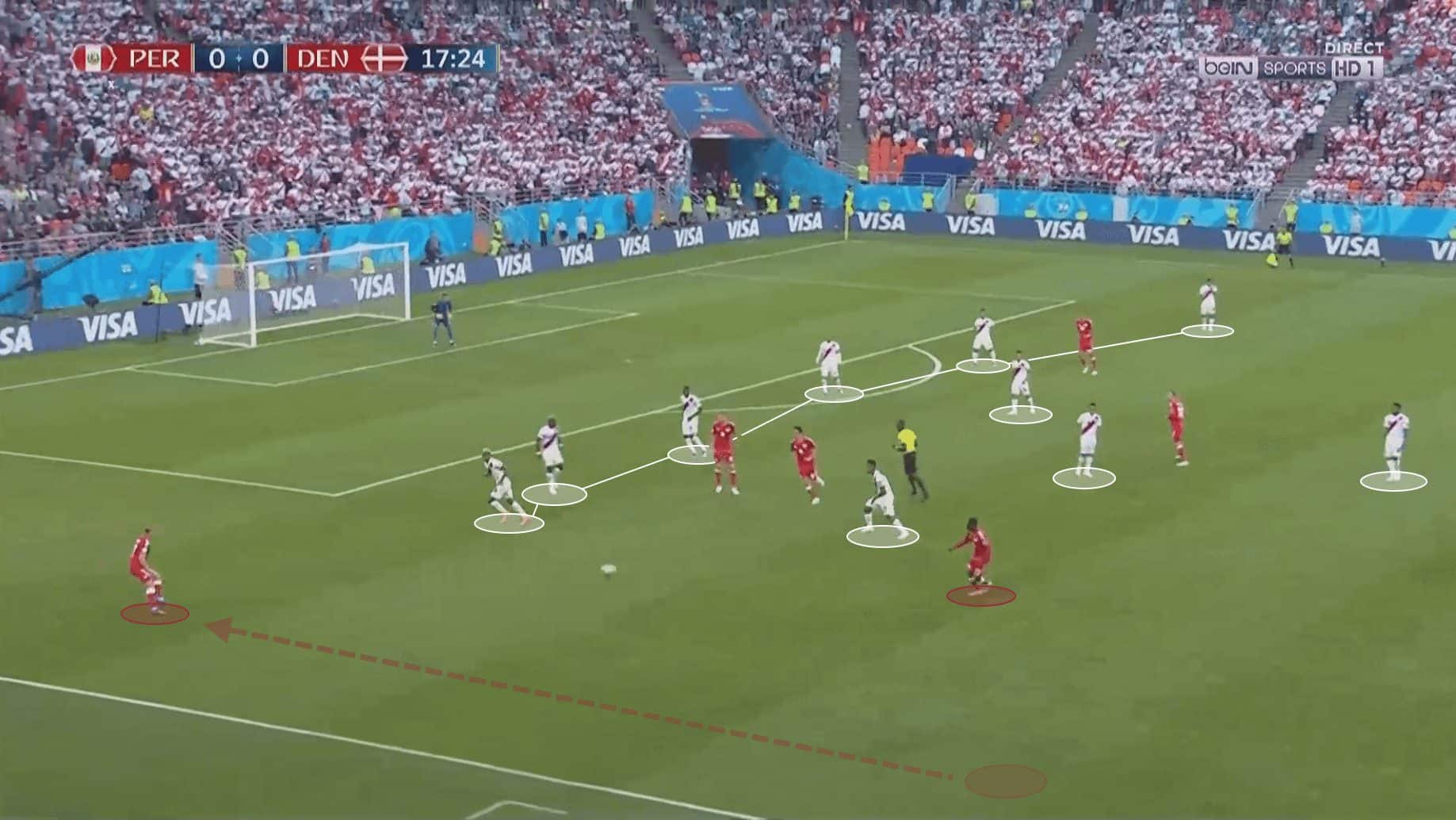
When Denmark transitioned from build-up play to their final attacking phase, whether that be from a long ball or playing it out of the defence, they often encountered a solid Peru deep block. In the above shot, Carrillo and Flores have dropped into temporary full-back positions. This made it nearly impossible for the Danish to pass through the backline. Instead, they were forced to rotate the ball around or launch a hopeful cross into the box.
Lively Peru Find Space
Unlike their opponents, Peru were more successful going forward in the first half. Their solid defending often led to them regaining possession in advantageous areas to quickly break into a counter-attack. Denmark’s full-backs and midfielders committed up the pitch, leaving lots of room for Peru to exploit on the break.
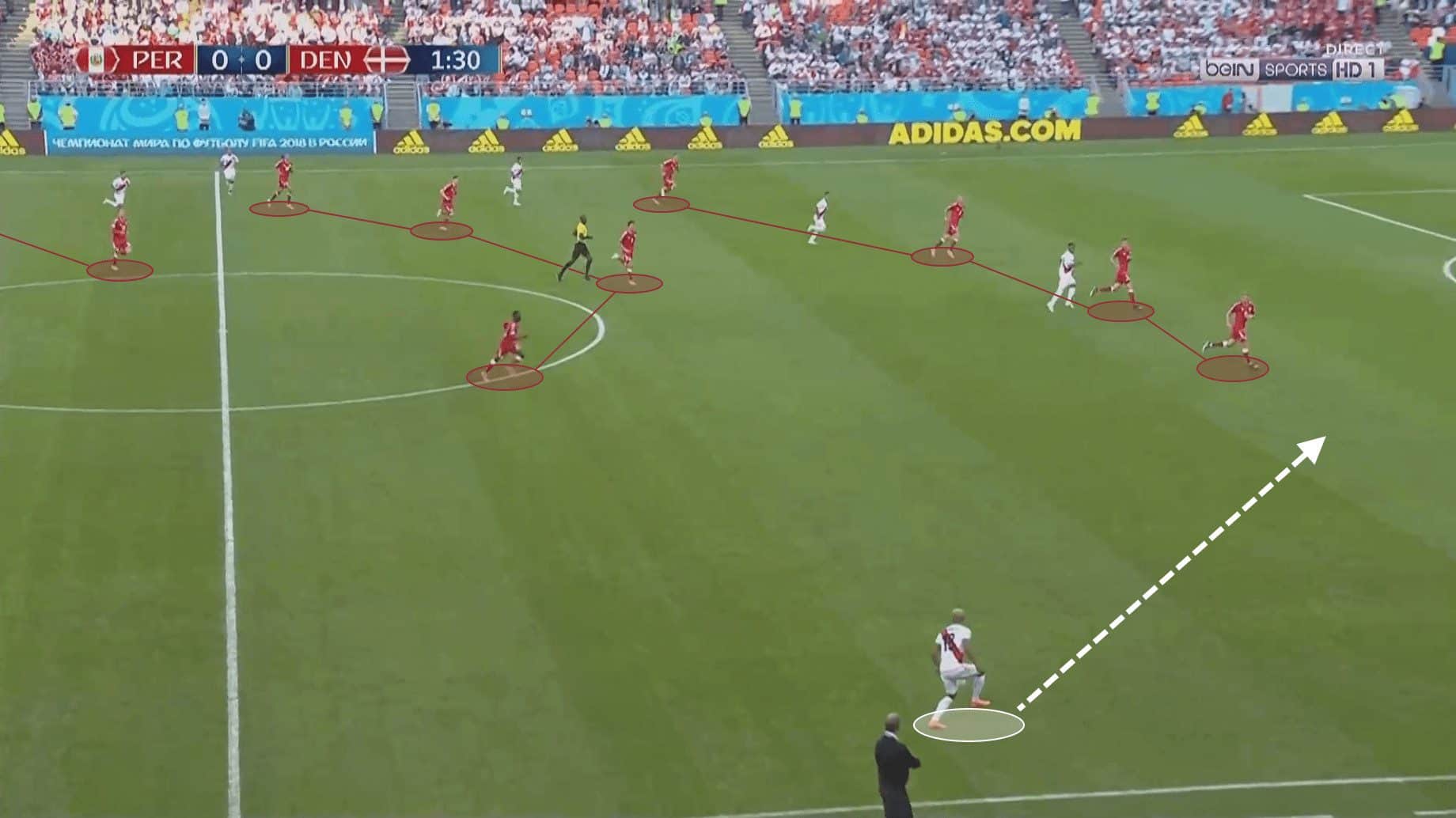
As Peru didn’t have much of a “build-up play”, per se, their only action on the ball in their half was sometimes a long pass. Above, Peru win the ball in the centre of the pitch and quickly cross it out wide. André Carrillo has anticipated this switch and there is no defender in sight when he gains possession. I noted before the match that Denmark’s Achilles heel is their vulnerability out wide.
“Mexico created overloads on the left side of the pitch and, in a matter of seconds, their left-back was left open on the byline….I can imagine players like Ousmané Dembélé and Kylian Mbappé ripping this Denmark side to shreds by continuously attacking down the flanks. It’s certainly something to watch out for at Russia 2018.”
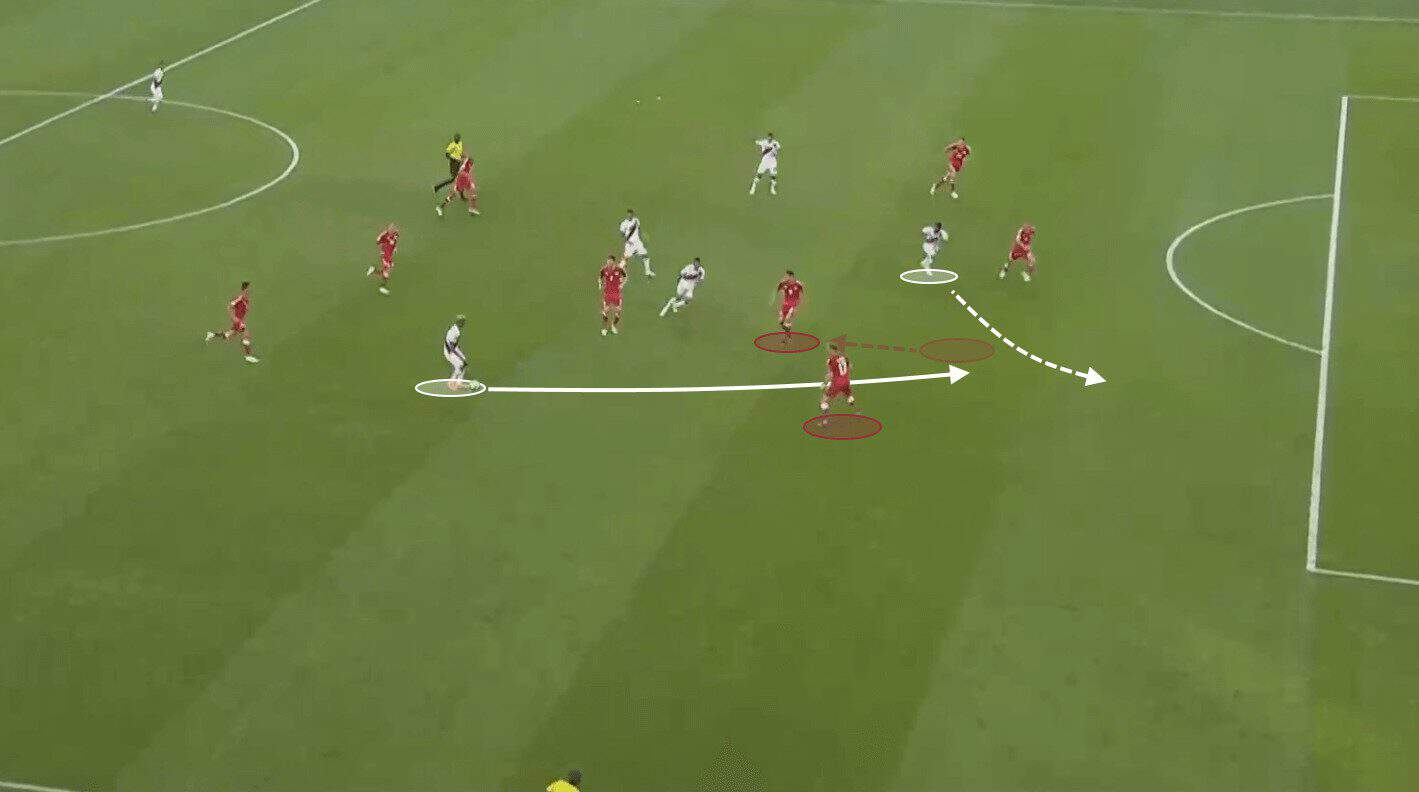
Peru found space out wide but couldn’t create anything concrete. They had more success with long balls, though, as is represented above. Possession shifted to Carrillo after the ball was won in the middle of the pitch. The winger spotted a run from Farfán and, with a crisp through ball, nearly put the veteran forward through on goal. This was Peru at their best; threatening and dynamic during quick spurts throughout the match.
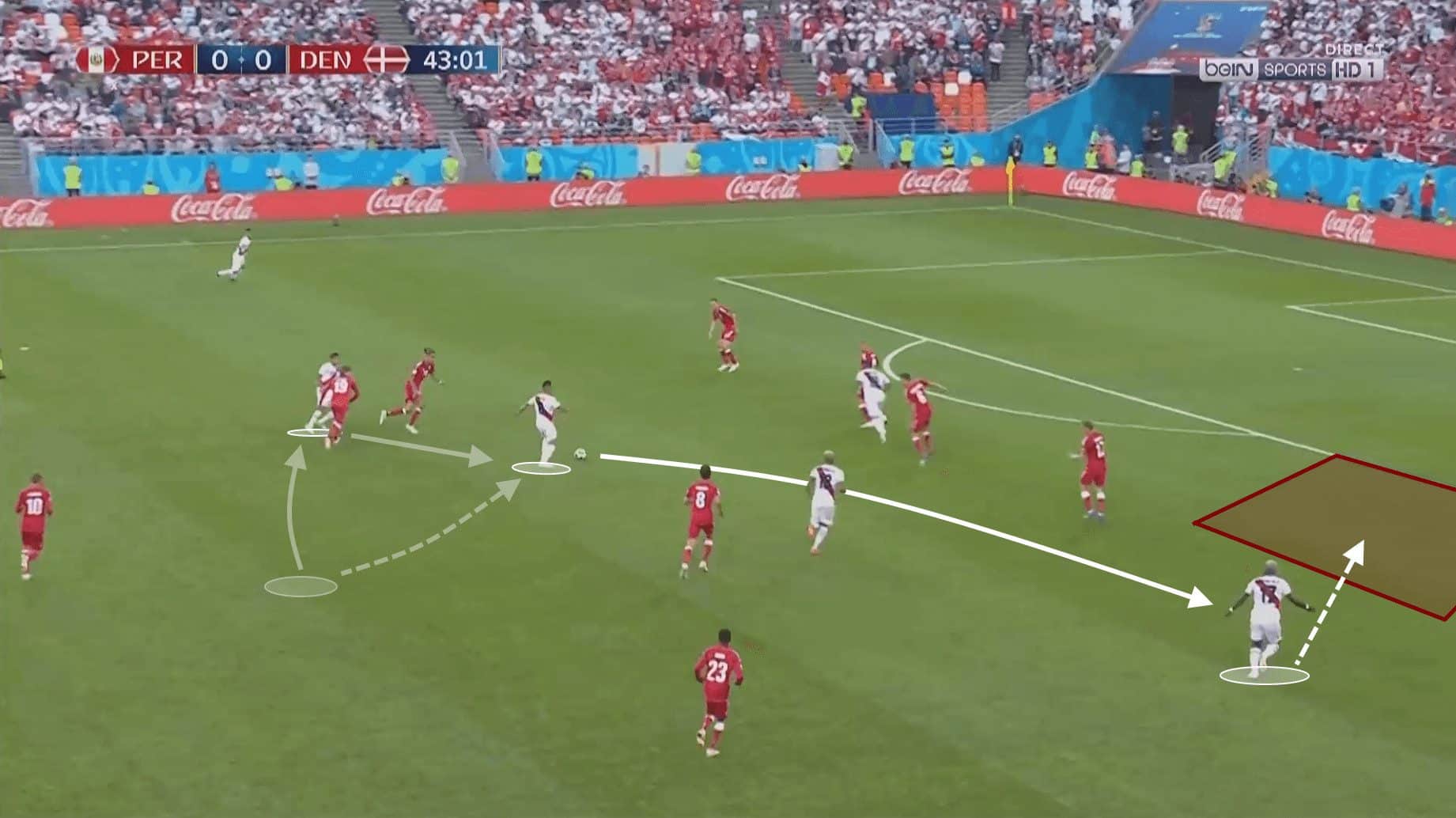
Peru found a way through Denmark’s tight defensive block (or so they thought) late in the first half. Christian Cueva dropped deep to receive a pass, cutting through the Danish midfield with ease. Lasse Schöne had entered earlier in the half to replace an injured William Kvist, and the veteran Ajax midfielder failed to track Cueva after his one-two pass with Flores.
Right-back Luis Advíncula held his run to let Cueva pick him out on the flank. Stryger didn’t spot the run and remained tight to his fellow defenders, which seemed to be a plaguing issue throughout the match. Cueva continued his run into the box, where Advíncula picked him out with a great low cross. Poulsen slid into a challenge, taking down the Peruvian, and the penalty was called after some deliberation by the VAR team.
Unfortunately for Peru, the very man who made the play happen couldn’t convert the penalty. Cueva skied his effort over the bar, meaning both sides entered the locker rooms at the half scoreless. Peru, however, could definitely be happier with their performance as they were the side with the most impetus going forward, creating shots inside the box.
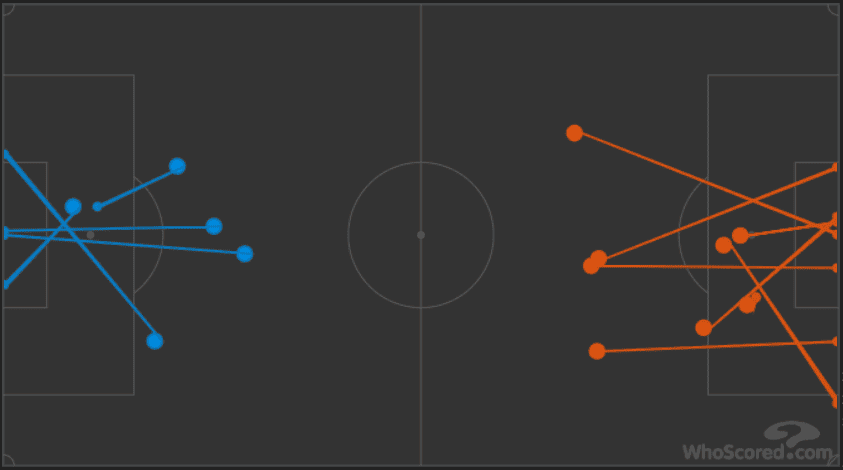
Second Half
For Denmark, None if By Air, One if By Land?
Both sides started the second half in a positive vein. Peru began building from the back a bit more, with Tapia dropping deep and looking for incisive, line-breaking balls. On the other end, Denmark switched their mode of attack to a more measured style as opposed to lobbing long balls endlessly at forwards.
In the 59th minute, Denmark finally got the big break they needed. Peru lost the ball high up the pitch, but Denmark were quickly able to put six of their players behind the ball when Christian Eriksen ran into vacated space. Sisto received the ball wide – a benefit of his deep positioning – and a through-ball to Eriksen set the Tottenham man off on the break. Furthermore, Luis Advíncula is positioned too high as well, leaving Peru’s backline even more depleted.
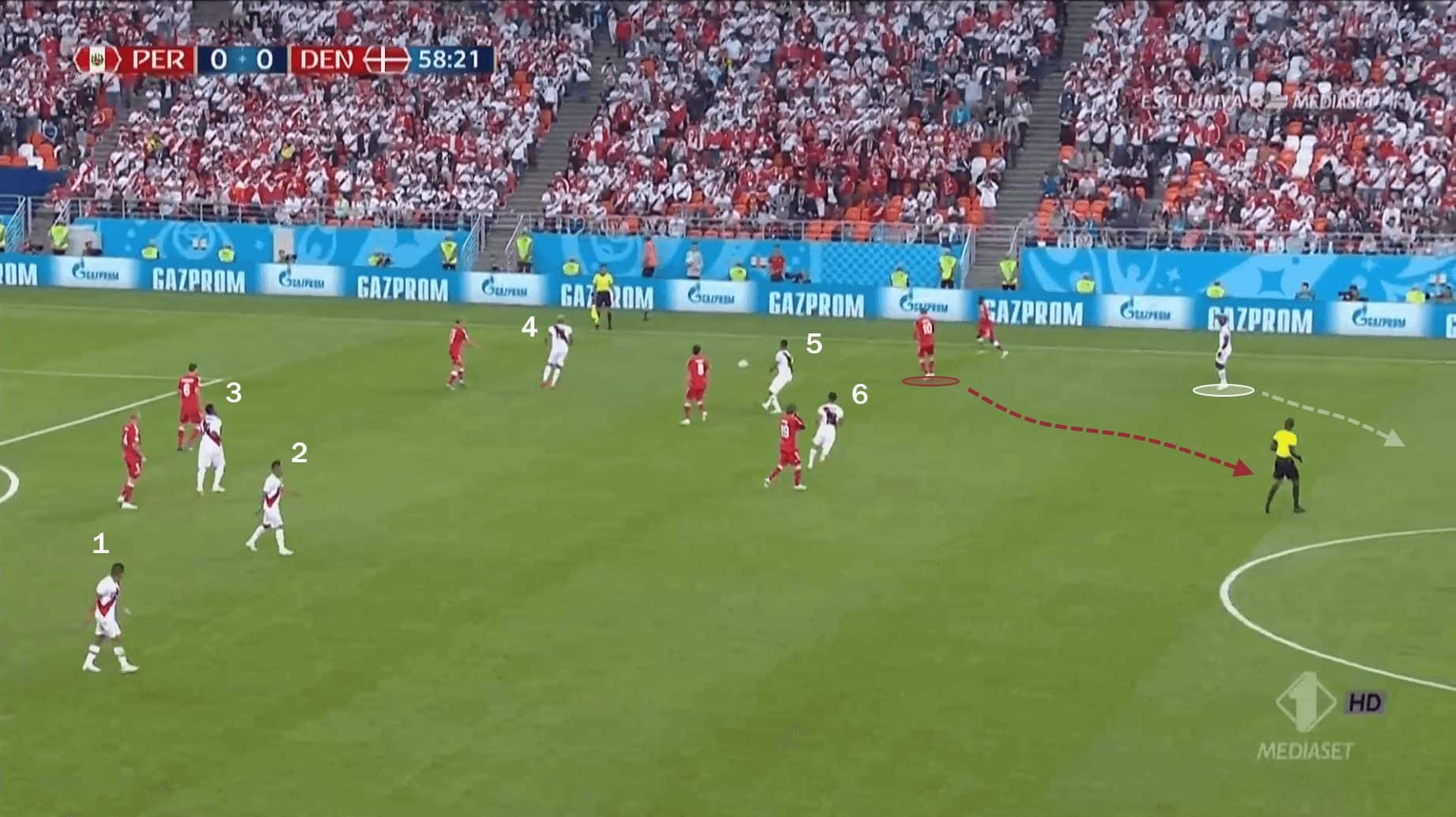
It was a 3v3 in the Danish final third; Eriksen baited Christian Ramos into stepping out to the midfielder instead of tracking “Yurari” Poulsen’s wide run. A perfect through-ball by Denmark’s star man allowed Poulsen to take a touch before battering the ball past Pedro Gallese.
1-0 Denmark due to an uncharacteristically lazy error by a well-drilled Peruvian side.
Peru Push Hard, Denmark Hold Block
Peru were understandably distraught with the concession of a goal in the second half and set out to spoil Denmark’s celebrations. Long balls, crosses, and through balls were the order of the day as Peru managed to (surprisingly) find lots of space in the box to work a few shots at goal.
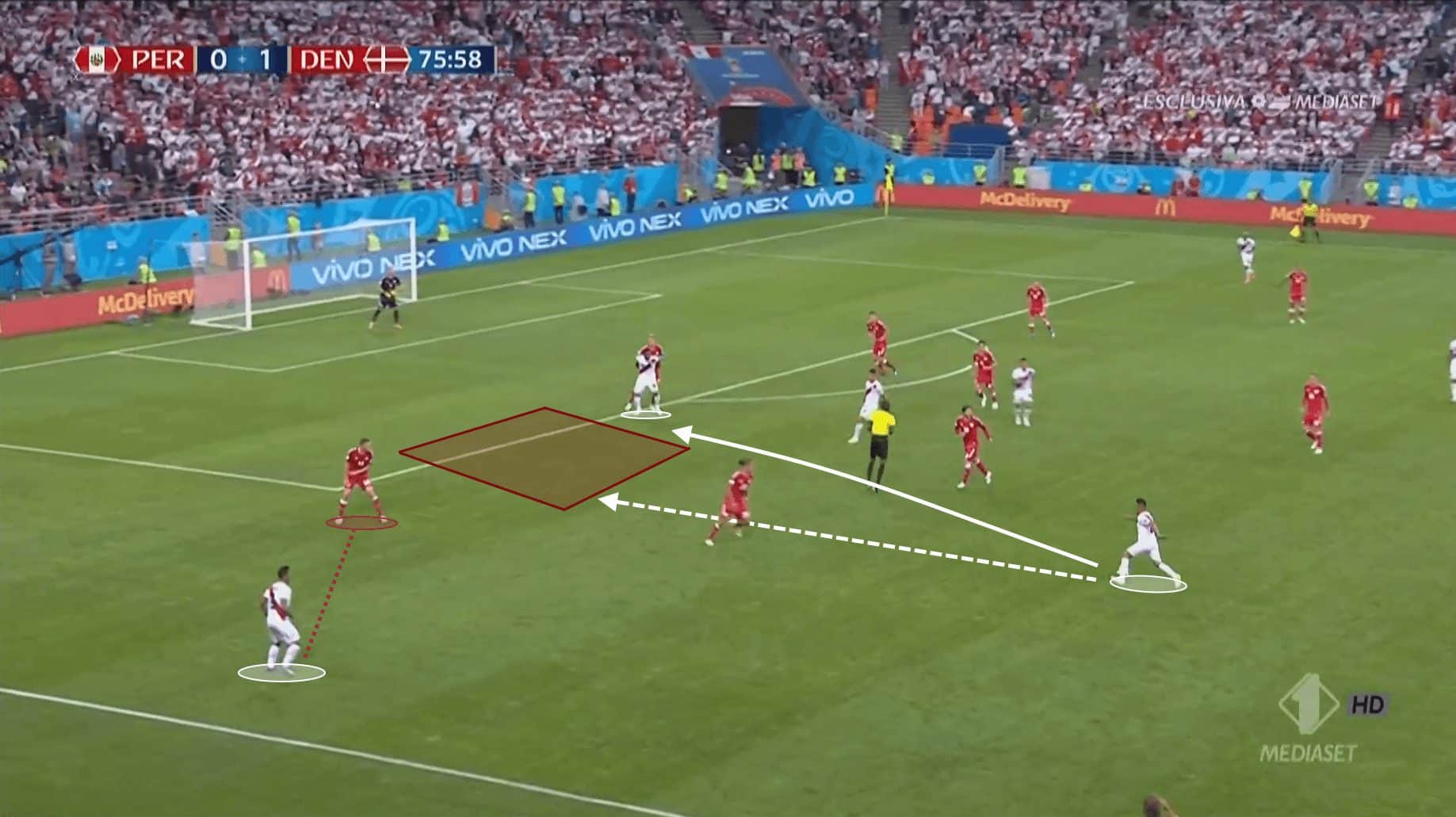
Peru did their best to force balls into Denmark’s box, winning second balls and taking plenty of ultimately unsuccessful shots. Here, though, they find an opportunity as Christian Cueva picks up the ball in the left half-space. Finding Jefferson Farfán, Cueva continues his run into a vacated space (Dalsgaard is occupied with Peru’s wide player, Trauco). Simon Kjær is forced to shift over and block off Cueva’s look at goal.
Conclusions
Peru were not able to find an equaliser, which will certainly disappoint them after the penalty miss. However, while both sides can be proud of their performances, there are tactical aspects that Denmark and Peru must iron out if they are to advance far in this competition.
For the winners, a failure to break down Peru’s defence may bode poorly for their remaining group stage matches. Australia played tough against France, while the French will surely look to exploit Denmark’s poor defending on the right and left flanks. In the end, long balls and counter-attacks were just enough to scrape three points out of this match. Eriksen’s presence in the midfield is absolutely crucial for the Danish Dynamite, but Yussuf Poulsen has certainly established himself as a skilled front-man going forward.
Peru were arguably the better of the two sides, but a combination of Denmark’s strong defence of final passes and the missed penalty meant an opening match loss. Christian Cueva was by far and away the best player on the pitch, for either team, in my opinion. His penalty miss will go down in Peruvian infamy, but his movement and on-the-ball presence alleviated a lot of pressure when Denmark pressed. Similarly, Luis Advíncula’s overlapping runs down the right are something to look out for in the future.
What did you make of the match? Let me know on Twitter @adiek22. Need more analysis to quench your thirst? Read the tactical previews of both Denmark and Peru.





Comments